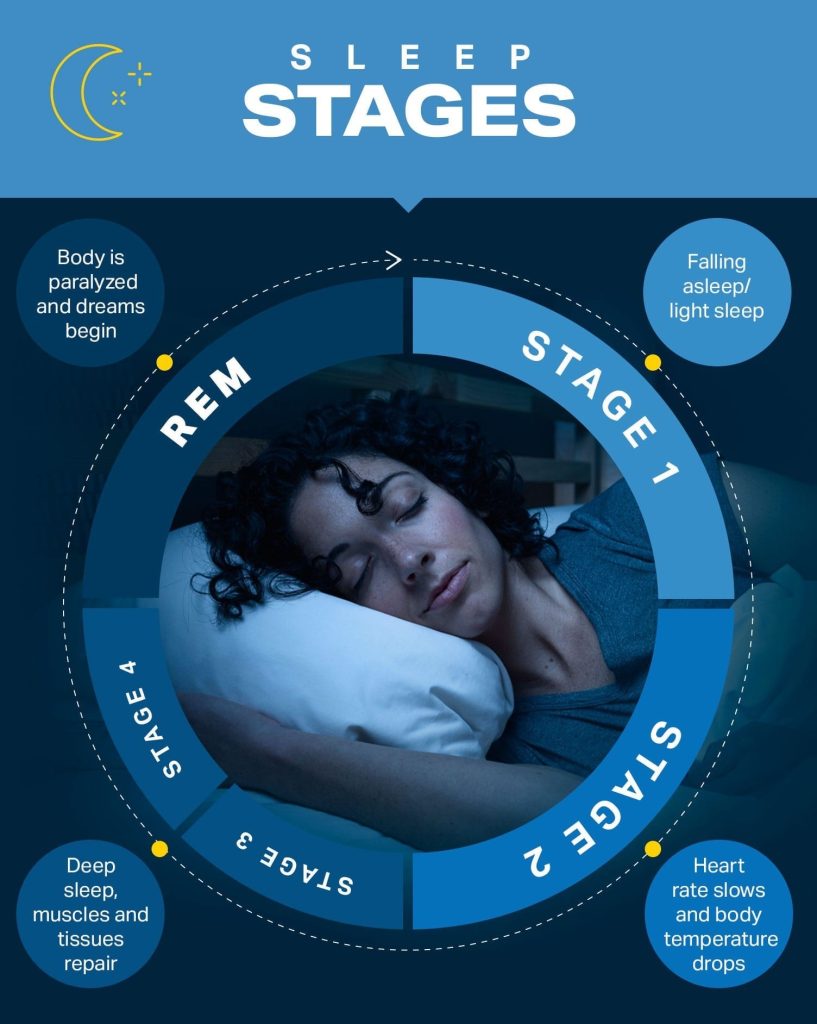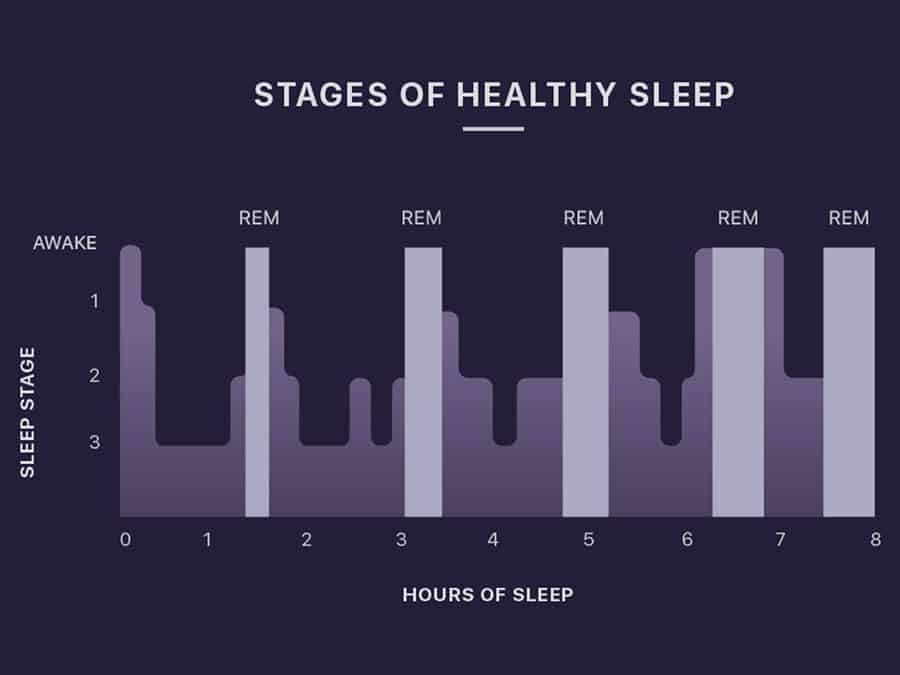SLEEP CYCLE: Navigating the Night for Optimal Rest and Rejuvenation
Sleep is one of the most essential components of human health and well-being.
Without sufficient sleep, our bodies and minds become fatigued, our emotions become
unstable, and our ability to function effectively is compromised. But did you know that not all
sleep is created equal?
In fact, there are distinct stages of sleep that our bodies cycle through each night,
each with its own unique benefits and effects on our physical and mental health.
Understanding these sleep cycles can help us optimize our rest and rejuvenation, and wake
up feeling refreshed and energized each day. So, let’s dive into the fascinating world of sleep
cycles, and discover how we can make the most of our nightly slumber.

Figure 1: Normal Sleep stages ( Infographic from https://blog.myfitnesspal.com/understanding-sleep-cycles-and-how-toimprove-sleep/
There are generally four or five stages of sleep that occur in a cycle throughout the night. The sleep cycle typically lasts between 90 and 120 minutes and repeats four to six times per night. Here’s a brief overview of each stage of sleep:
Stage 1: This stage marks the transition between wakefulness and sleep. It is a light stage of sleep, and people in this stage can be easily awakened. During this stage, the brain produces alpha and theta waves.
Stage 2: This stage is a slightly deeper stage of sleep than stage 1. During stage 2 sleep, the body temperature drops, and heart rate and breathing slow down. Brain waves continue to slow down and are characterized by bursts of rapid brain waves called sleep spindles.
Stage 3: This stage is the beginning of deep sleep, also known as slow-wave sleep. During this stage, the brain produces slow, high-amplitude delta waves. It is difficult to wake someone from this stage of sleep, and if they are awakened, they may feel groggy or disoriented.
Stage 4: This stage is also considered a part of deep sleep and is characterized by even slower delta waves than stage 3. It is often considered a separate stage from stage 3, but some sleep experts consider them together as part of slow-wave sleep.
REM (Rapid Eye Movement) sleep: This stage is characterized by rapid eye movements and a high level of brain activity. This is when most of our dreams occur. During REM sleep, the muscles of the body are essentially paralyzed, and the heart rate and breathing become irregular. REM sleep is thought to be important for memory consolidation and emotional regulation.

Figure 2: Through each stage, REM will last longer – up to an hour during last cycle.
The sleep cycle usually begins with stages 1 and 2, progressing to stages 3 and 4 before moving into REM sleep. After REM sleep, the cycle begins again with stage 1. As the night progresses, the amount of time spent in REM sleep increases while the time spent in deep, slow-wave sleep decreases as depicted in Figure 2.
Overall, the sleep stages and cycles are essential for maintaining healthy sleep and promoting daytime alertness and performance. Disruptions to the sleep cycle, such as insomnia, sleep apnea, or other sleep disorders, can lead to significant negative impacts on health and well-being.
Dr Amei Rashid
Aviation Physician/ Human Performance and Limitation Expert in Aviation AFLY AEROHEALTH INSTITUTE
